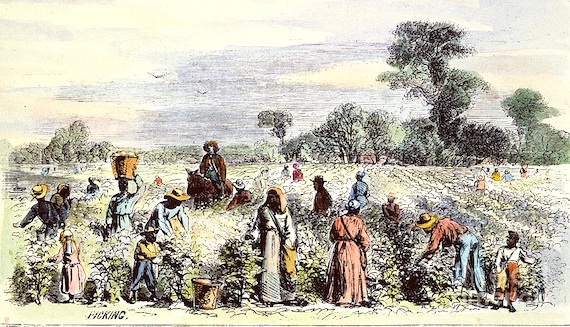Giving Students a Tactile Historical Experience
A MiddleWeb Blog
It is difficult for middle school students to sit still and focus for more than 20 or 30 minutes. Activities that visually, physically and emotionally engage students should be a regular part of any curriculum for adolescents.
Experiential lessons have the greatest potential to transport students to another time and place. They are also among the most difficult to orchestrate, and can sometimes present ethical dilemmas that teachers cannot easily resolve.
Reality Check
An experiential is a lesson where a teacher attempts to recreate aspects of a specific historical phenomenon so that the students can better understand “what it was like.” This often involves a change in the classroom environment, the introduction of artifacts related to the subject being studied, or some other tangible element (such as food) that is intended to make an impression on the students.
Where a dramatization (which I wrote about in a recent Future of History post) seeks to get students into the heads of specific historical actors, an experiential is more concerned with giving the students a tactile historical experience.

Approximating such experiences is not necessarily any better. Packing students together into a tight group and then telling them that they have just experienced the middle passage is, at minimum, ethically dubious. Some things simply cannot be approximated in the classroom.
The Tactile Experience
My unit on the causes of the American Civil War begins with slavery itself. Most of the concepts are introduced through documents, images, films and discussion. While I make every effort to help students appreciate the terrible realities of slavery in the United States, I never pretend that these can be recreated in the classroom.
However, as cotton had a large role to play in the expansion of slavery in the United States, I have adapted a lesson that originates with the Cotton Classroom, which provides raw cotton and related lesson materials. I encourage readers to check out their site, as the lesson is easy to put together, fun and thoughtful. For the most part, I follow their model. The readings are a little too dense for the majority of my students, so I use slide shows and alternate texts, but I otherwise stick to the general outline.
My purpose in doing the cotton lesson is to help my students connect a real physical thing (cotton) to the history we are studying. The kinesthetic experience is just the starting point for the students; they will go on to read about the cotton gin, plantation life and the textile industry.
But the experience with the raw cotton provides a real-world anchor for the new schemas that the students are developing. It is not necessary to make the students “feel like slaves” to create that connection.
Knowing versus Understanding
History is one of my passions. In adolescence I participated in immersive historical recreations like the Renaissance Faire in the hopes that it would help me better understand what it was like to live in a bygone era. Much as I enjoyed these events, they did not provide an authentic experience, nor did they help me help me make meaningful connections between the history and the present.
While it is wonderful to find students who are passionate about history for its own sake, such students are not in the majority. What makes a historical experience purposeful and memorable for most students is the ability to connect it to their own lives. An experiential is an opportunity to draw such a connection, so that the students not only come away with a better grasp of the history, but are also able to see their own place in the historical spectrum.
If you are a teacher who uses experientials in your history classroom, I’d like to hear your ideas. Use the comments area below or contact me: fancypants.brock/at/gmail.com.




































Dear Aaron: I really loved your blog about tactile sensation and I think you’d get a kick out of my new book that boosts creative teaching, and you certainly are one, also stay in touch if you’d like:
jack.zevin@gmail.com
See Creative Teaching for All: In the box, out of the box, and off the walls (Rowman & Littlefield, 2013) best and keep up the great work. By the way, My son is a Ph.D. candidate at UCLA